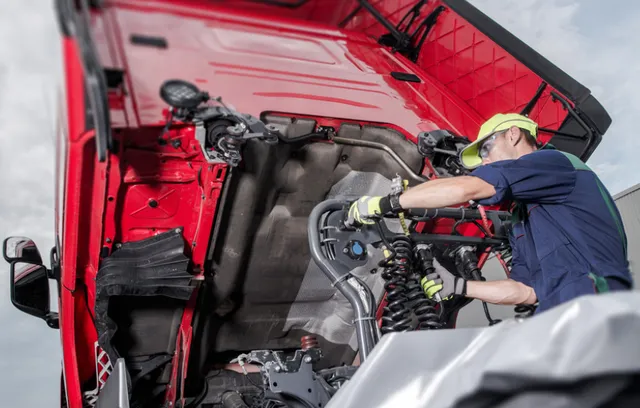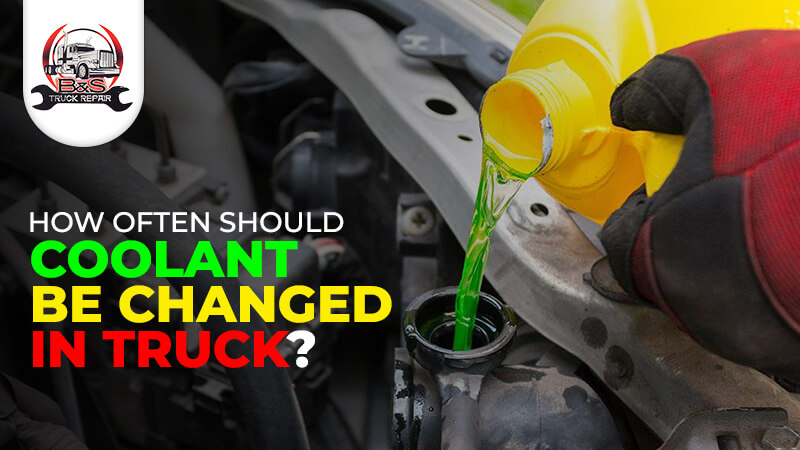All motor vehicles, usually propelled forward and occasionally backward by internal combustion engines, get their power from the engine. Engines heat up a lot because of the physics operating in these systems. Your engine will deteriorate if you don’t take the necessary precautions, and eventually, some of its components may even melt. The good news is that using a good quality coolant can prevent engine overheating, even though a situation like this might cost you thousands of dollars.
Coolant is a liquid, also referred to as antifreeze, and is essential to the engine cooling system of your truck/ vehicle. However, coolant must be replaced periodically since it degrades over time like other vehicle fluids. Thus, how frequently should the coolant in your truck be changed? The function of engine coolant suggested coolant change intervals, signs that your coolant needs to be replaced, and advice for replacing the coolant in your truck will all be covered here.
What is Coolant, and Why is it Important?
Coolant, usually a blend of water and antifreeze, performs many vital roles. Engine coolant keeps engines from overheating. However, engine coolant does more than just this function; it also handles lubrication, coating the engine’s moving components to guard against damage to the water pump and head gasket.
Coolants transmit, optimize, and use antifreeze protection to ensure that the engine in your truck/ vehicle runs as efficiently as possible. Because fuel is burned in the combustion process to produce energy, some of that energy will eventually be used by the engine and its components to produce heat. The exhaust system is used to release the remaining gases.
What Is Coolant Flush in Truck
While a coolant flush can save your truck’s life and let your engine’s regulating agents work again, an engine repair and replacement might cost hundreds. Cleaning your cooling system of debris, rust, and sludge is an important component of this process, as is checking different components for signs of wear and tear. In addition, this procedure fully services your engine’s cooling system.
Emptying used coolant and giving your vehicle a fresh coolant mixture is called a coolant flush. You may usually get suggestions on how frequently you need a coolant flush from the professionals who maintain your truck. Beyond this professional advice, how your truck works, looks and performs may frequently tell you whether a coolant flush is necessary.
Is A Coolant Flush Necessary?
Coolant flush is a preventive measure that shields your truck’s engine and cooling system from harm. Hoses and coolant lines are two components that may be safeguarded by keeping your system free of undesired junk. These components of your engine’s cooling system can shield your car from serious harm.
To avoid overheating, it takes in heat from the engine and releases it through the radiator. It greases hydraulic pumps and other system components and has anti-corrosion agents coated within the cooling system to stop rust and deterioration. Engine lifetime and performance depend on the coolant being kept at the right volume and combination. Over time, coolant loses its ability to cool and safeguard the system effectively; hence, questions such as how often should coolant be changed in truck? or are there any services for coolant flush near me? may arise.
Working of Engine Coolant
The coolant is stored in a reservoir next to the radiator before it is used within the engine block and its moving components. The hydraulic pump allows the engine coolant to seep into the engine. Usually, it is used in conjunction with a liquid cooling system. The fan forces air into the radiator; the radiator’s job is to transport heat away from the coolant, and a thermostat regulates the coolant’s temperature.
The coolant flows through the engine and back via the radiator when the engine is operating. It then exits through the bottom of the radiator and is drawn into the engine block by the water pump. Here, the coolant removes extra heat from the engine and reduces its operating temperature. After the task is completed, it is moved once more to the upper portion of the radiator, where it cools down.
When to Replace Coolant
The majority of truck manufacturers and engine repair companies advise changing the coolant every two to three years or every 30,000 to 50,000 miles. Coolant change periods, however, might differ based on factors that indicate how often should coolant be changed in truck:
Age and mileage of the vehicle: Coolant degrades more quickly in older, high-mileage automobiles. If your vehicle has more than 100,000 miles, consider replacing it more often.
Climate and driving circumstances: Frequent short excursions, high temperatures, and towing or hauling might hasten coolant breakdown. If using it in inclement weather, change it more frequently.
Coolant type: Consult your owner’s handbook since different coolant formulas, such as hybrid organic acid (OAT), extended life, and totally synthetic, have different replacement intervals.
Servicing history: Follow the recommended intervals if the coolant has been flushed regularly. If you’re not sure about the maintenance history, shorten the intervals.
Signs You Need a Coolant Flush.
Don’t depend just on mileage intervals. Keep an eye out for these indications that the coolant in your truck needs to be changed:
- The coolant ought to seem transparent and brilliant. Green, brown, or reddish discolorations indicate corrosion and contamination.
- A leaky head cover may be indicated by greasy filth inside the reservoir or around the radiator cap.
- An internal or external leak may occur if the level consistently falls below the minimum line.
- If coolant is overheating often, especially when idling, it may be losing its capacity to transmit heat.
- Excessive hydrocarbon accumulation in the system may cause a strong, sickly-sweet smell.
- Don’t ignore coolant degradation symptoms. If you wait too long between updates, you might risk the damage of overheating and corrosion.
How To Change Coolant
To keep your truck’s engine operating at the right temperature and avoid corrosion, you must change the coolant on an ongoing schedule. Replacing coolant is a step-by-step process that you can either do by yourself or search on the internet for any services for coolant flush near me. To properly replace the coolant in your vehicle, follow these instructions:
Let the engine cool completely.
To prevent burns from hot coolant, replace the coolant only when the engine is totally cooled.
Before starting, let the engine cool for a few hours if it hasn’t been running recently.
Find the Drain Valve and Place the Drain Pan in Place
Locate the drain plug or the petcock valve, usually at the bottom of the radiator.
Put old coolant in a large collect pan beneath.
Lift the radiator cover.
Carefully remove the radiator cap when the engine is cool to let air into the system. This makes it possible for the drain valve to open smoothly.
Drain old coolant.
After securing the drain pan beneath, open the radiator petcock valve or remove the stopper. Let the system’s old coolant completely drain.
Use clean water to flush the system.
After emptying the system, shut the valve and add fresh water to rinse off the silt. Empty the drain water.
Examine Parts and Change Worn-Out Parts
Examine connections, seals, and hoses for wear and leaks once the system has been emptied. To stop fresh coolant leaks, replace any worn-out parts.
Replace Coolant Mixture
Follow the manufacturer’s recommendations while adding new coolant through the radiator cap opening. Blend with purified water in the appropriate 50/50 proportion.
Start the engine and add coolant.
Set engine temperature to run to circulate.
Choose Best Truck Repair Shop For Your Truck Today!
- Affordable
- Quick Fix
- Boost Truck Performance

Final Thoughts
Periodically replacing the coolant in your truck is one of the most effective methods to preserve engine health and increase vehicle longevity. Should you adhere to the mentioned guidance and the manufacturer’s suggestions, your truck’s flawless operation will continue for many kilometers. Visit B&S Truck for repair Semi Truck.

